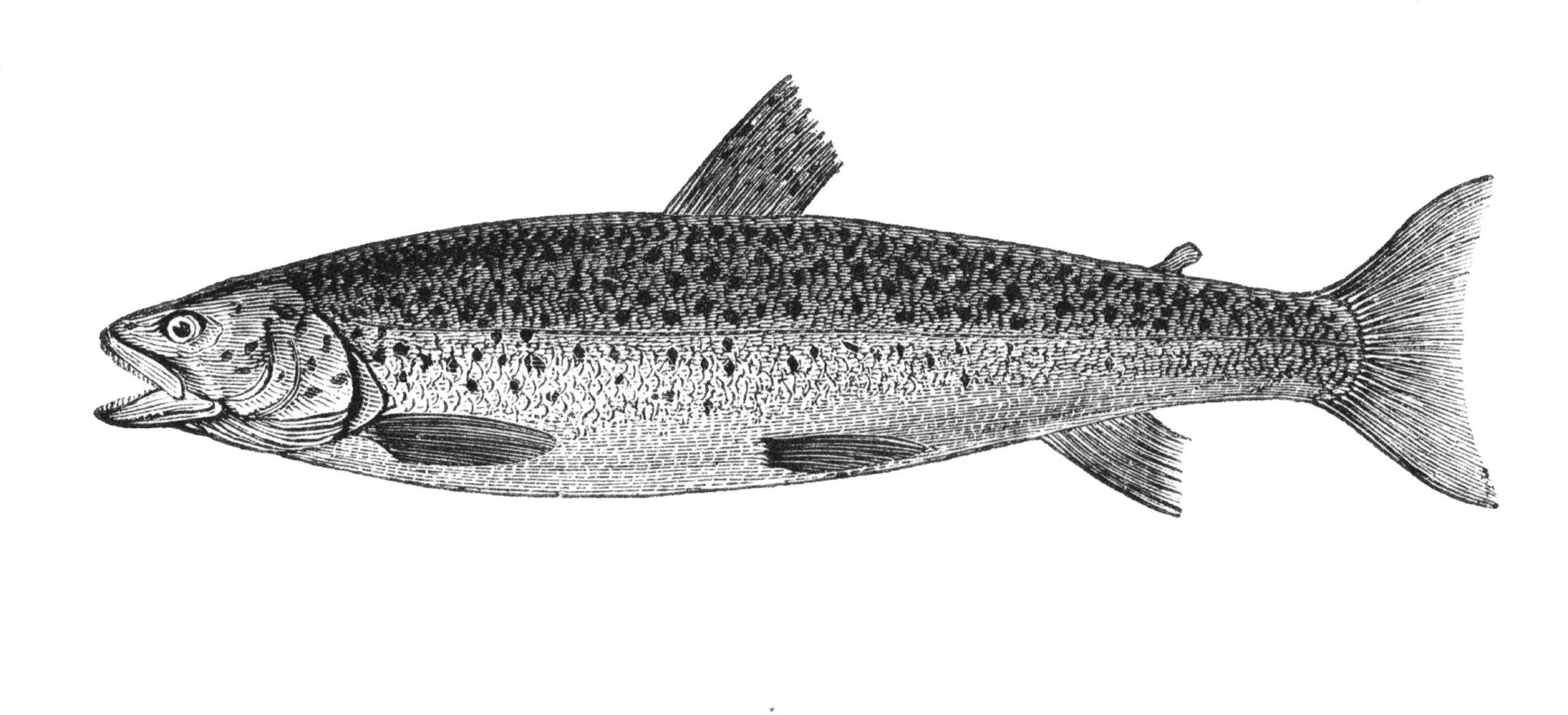
Environmental degradation is nothing new. Back around 1890 or so, someone had the bright idea of introducing rainbow, mackinaw, brown and brook trout into Lake Tahoe. That, along with outlandish commercial fish harvesting due to the Comstock boom, and intensive logging and milling activities around the Lake, doomed the native Lahontan trout population. Loggers dumped so much wood pulp into streams that, on some days, the water became too thick for fish to swim through. The further introduction of other non-native species insured that by the 1930s not one Lahontan trout could be found in all of Lake Tahoe.
The Lahontan trout is the State Fish of Nevada, and has been designated as an endangered species. This relic from the Pleistocene era played a large role in the lives of the native Piaute people. John C. Fremont dubbed the tasty pink-meated Lahontan trout the salmon trout. His short pronouncement probably guaranteed that every person between Reno and San Francisco wanted to eat one.
This ancient species of cutthroat trout survives freezing temperatures, thrives in high-alkaline waters, lives up to 20 years and can grow as heavy as 40 pounds. Put that on the end of a fishing line! But the Lahontan trout cannot reproduce without spawning upstream, so damns became a further threat to their survival.
Considering the obstacles confronting the poor Lahanton trout, it is astonishing that any survived at all. But survive they did, thanks to an unknown benefactor who planted Lahonton trout in the streams of the Pilot Peak Mountains on the Nevada-Utah border.
In the 1970s, fish biologist Robert Behenke was asked to identify a mysterious trout species that couldn’t have been native to the Pilot Peak streams. Through testing he concluded that the trout was of the original Lahontan strain. He was not believed.
Then in the mid-1990s, Mary Peacock, a biology professor at UNR, found that advancements in DNA testing allowed her to compare small genetic samples from a museum with samples taken from the Pilot Peak trout. The results proved that Behnke was correct. The DNA from Pilot Peak fish and the Lahontan variety matched.
It was time to bring the Lahontan trout back to its homeland. Beginning modestly in a garage outside a hatchery near Reno, some Pilot Peak Mountain fingerlings thrived under thoughtful management. Then, to everyone’s satisfaction, the fish continued to thrive, growing fast and large when planted into Pyramid Lake.
The care and management developed by biologists while stocking Fallen Leaf Lake led to more successes. Instead of stocking large numbers of fish all at once, research showed that smaller batches stocked at different locations and at different times allowed more of the young fish to find hiding places and to survive.
Repopulation continued. In 2013 a pair of tagged Lahontan cutthroat trout were observed spawning in a tributary to Fallen Leaf Lake. In 2019, a release of 5,000 Lahontan cutthroat in Lake Tahoe was followed in 2020 by another release of 4,500 fish.
Let’s hope that Lake Tahoe’s Lahontan cutthroat trout population prospers. Then, instead of watching Kokanee run up Taylor Creek, we all can have the thrill of watching the legendary Lahontan cutthroat trout make Taylor Creek their spawning grounds, and continue to spawn right there, generation after generation after generation.
For a pictures of the great and legendary Lahontan cutthroat trout, click here


 Facebook
Facebook
 Twitter
Twitter
 Pinterest
Pinterest
 Copy Link
Copy Link
